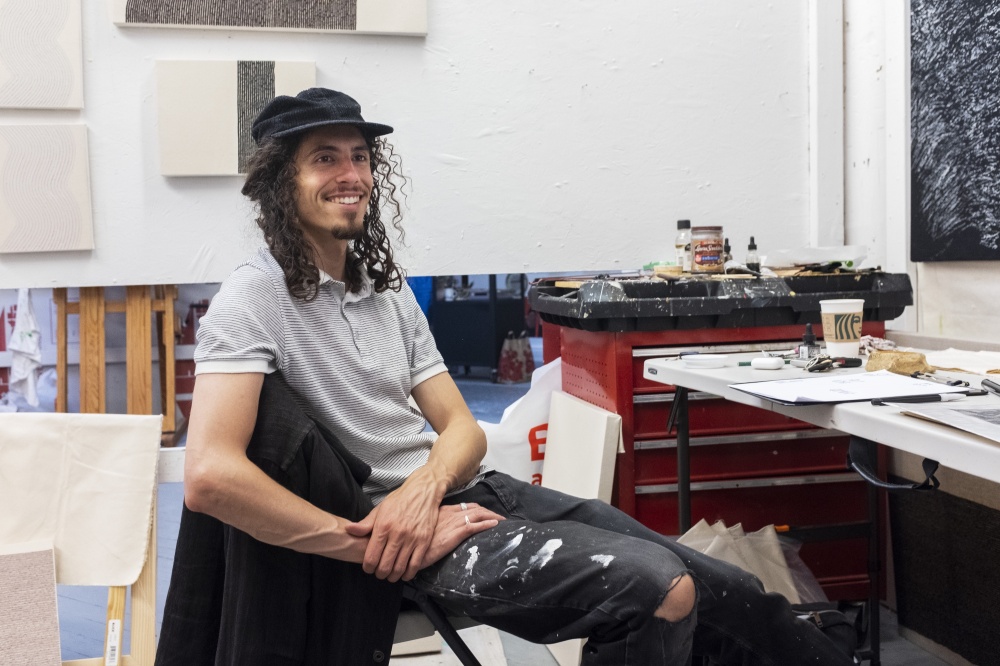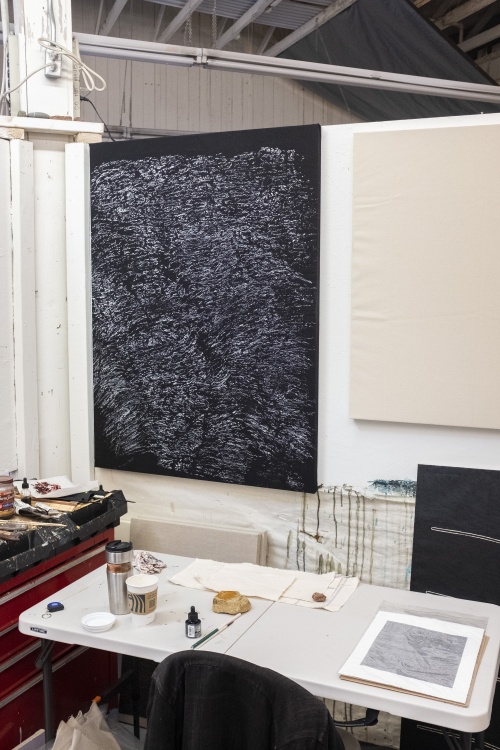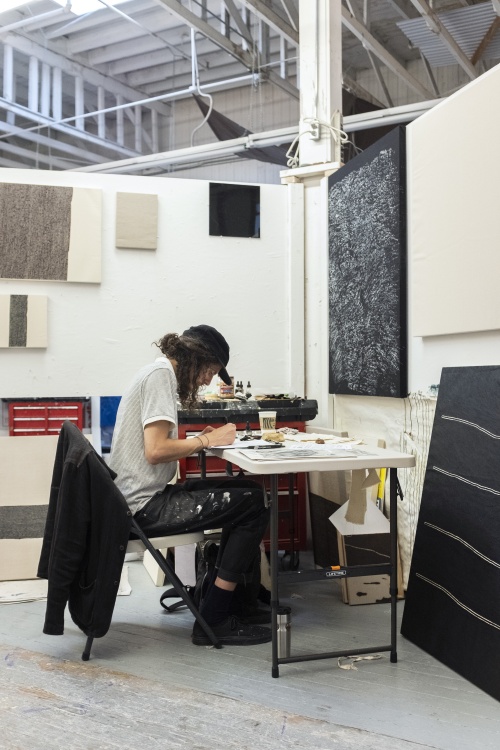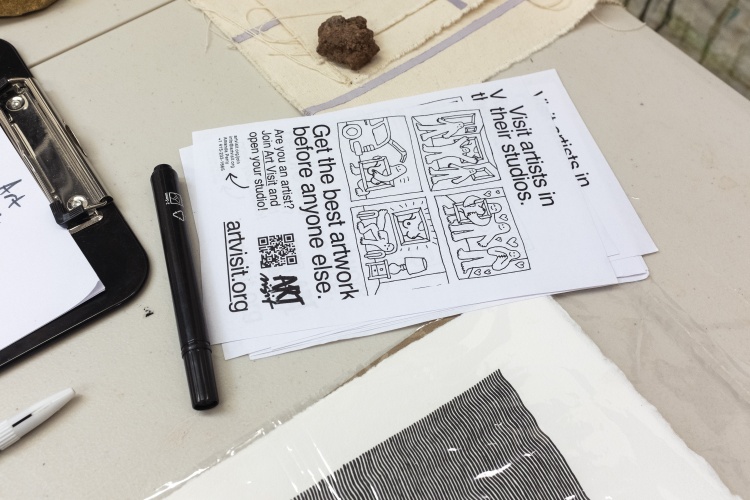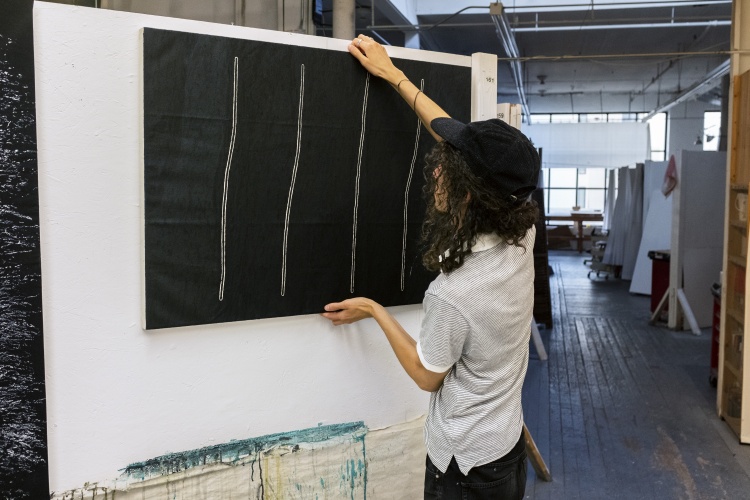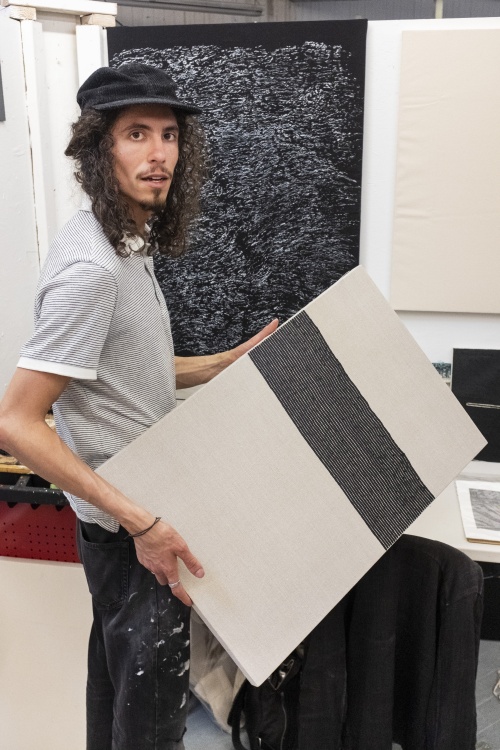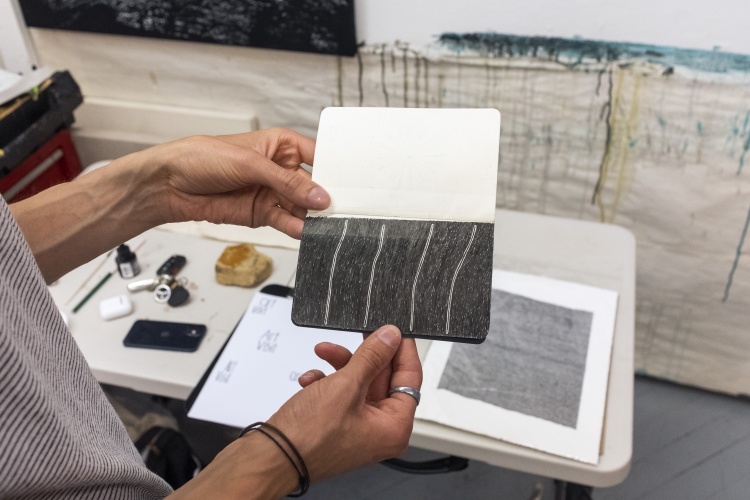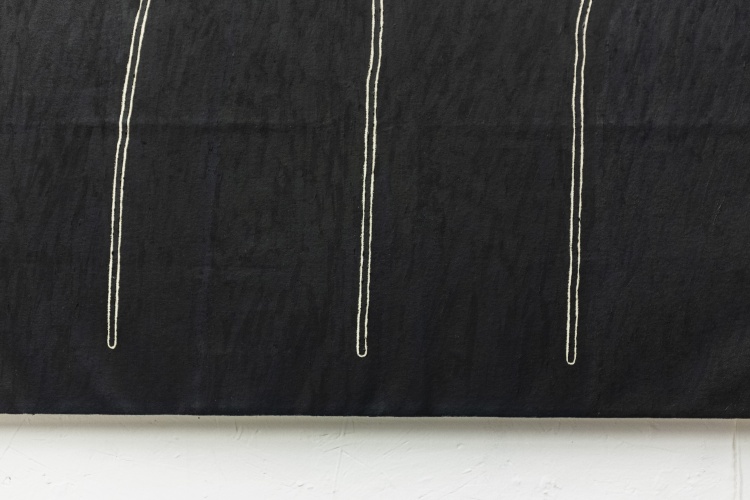When I arrive for my visit to Cameron Bunting’s studio in the Mission District of San Francisco he greets me on the street and we exchange a quick Hello. Then, he leads me inside a building and up to his studio, unit 161, which is located on the top floor. Cameron’s studio is in the middle of the room, a large, shared space with small sectioned off areas that belong to other artists. I’m surprised that the building is completely empty except for Cameron, despite the fact that over 30 other artists rent studio space there.
I notice that Cameron's corner is very neat and well lit. He tells me that he chose to rent the smallest studio unit offered explaining that he likes to challenge himself. He says he experimented with similar work-space limitations during his academic studies at California College of the Arts. Despite the small space, his studio contains several sizable paintings. I’m impressed!
I ask Cameron about a bigger work on black canvas with white marks that hangs above his desk. Easily, he begins to talk about piece, beginning with how it was inspired by his many visits to Black Sand Beach (located not far north from The Golden Gate Bridge). He tells me about waiting for low tide and then climbing up a steep, rocky cliff to get to a hidden beach where there is a cave, which is only accessible at low tide. I’m riveted as I listen to Cameron talk about entering the cave and draping black, velvet fabric over the rocks there, then tracing their surface with a waxy, white crayon. I can almost hear the sound of the ocean waves crushing on the rocks, amplified inside the cave. He reminds me he only had minutes to complete the tracing before the cave would disappear again with the rising tide, and tells me about how his heart was racing to finish the drawing to his satisfaction. He describes how after the rock imprinted onto the fabric he folded the cloth into his backpack and quickly, yet carefully, exited the cave. Later in his studio, he stretched the fabric on a wooden frame. "Yes… It's finished… I'm very happy with it”. Cameron shows me some photos on his phone taken during the day he made the piece, of the low tide, the cliff, and the cave. Looking back at the work, I realize I’m admiring both its appearance and Cameron's inventiveness.
First and foremost, Cameron is a true minimalist. He reminds me of a monk in his dedication to making art. His working style is methodical and time consuming. Cameron plans and executes his paintings with precision. He accounts for all possible mistakes in advance. This level of attention results in a warm feel to his abstract compositions. He likes to develop and hone systems and methods for his creative process. His painting process has a structured opening, experimental middle, and directed ending. He begins with a single line in the middle of canvas. Then, he fills the canvas with parallel lines in a Zen-like pattern. The effect is that small imperfections start to multiply and subsequently evolve into organic patterns. In terms of style and material, Cameron loves raw canvas, minimal colors, line structures, repetitive patterns and negative space.
Brushwork very much defines Cameron's artwork. His brushstrokes are visible on every surface and in every line. As part of his signature style, Cameron leans the top of his lines towards the right, creating a light slant that give his paintings a relaxed look. He says that when he draws these lines he’s thinking of a skater, casually leaning against a wall.
As we continue to talk, I come to understand that Cameron is a very knowledgeable and observant student of art. Also, since he embarked on his artist's career, he has opened himself up to every opportunity. He tries to immerse himself in the Bay Area art scene and frequently visits local galleries. I come to the conclusion that I’ve never met an artist more determined than Cameron.
I'm curious to know where art will take Cameron next. To another cave? As we leave his studio, Cameron says he’s thinking of tracing rock formations at the footsteps of Mount Diablo next. I can’t tell if he’s serious, but I sure hope he is.
You can meet Cameron by booking a visit to his studio at https://artvisit.org/artists/cameron-bunting or by visiting him at the Anglim/Trimble Gallery in the Minnesota Street Project, where he works as a gallery assistant most days.

